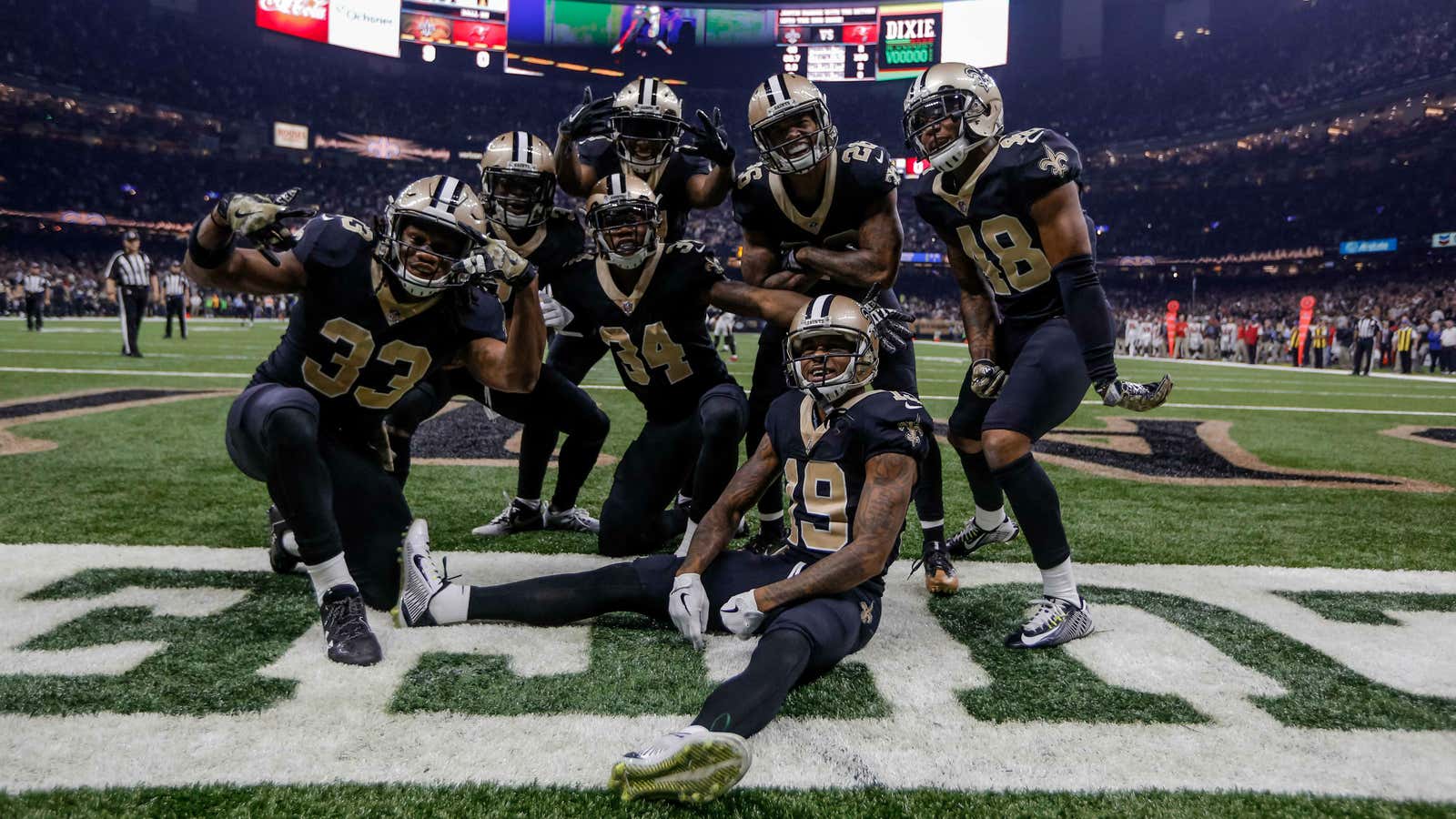It’s not surprising that professional football players need to eat a lot.
Exactly how much depends on the player’s position, of course. Linemen and defensive tackles, typically the biggest players on the team weighing as much as 350 lbs, need to eat 9,000 calories per day throughout the season to maintain their weight. “Smaller” players, like running backs or wide receivers, who weigh between 200 and 250 lbs, need something like 3,500 calories a day, according to STAT.
That’s still far more than the average human, who needs between 1,500 and 2,000 calories a day (most of that is used to power the brain). Really active people—professional athletes and Olympians (paywall)—need more to make up for the energy they expend training and playing their sport. Elite swimmers and cyclists, for example, need between 8,000 and 10,000 calories a day while in season.
But we at Quartz were wondering: How do human caloric needs stack up against those of the rest of the animal kingdom?
Among apes, humans eat the most. A 2016 study from researchers at Hunter College in New York and the Lincoln Park Zoo in Chicago found that we tend to eat 400 calories per day more than chimps on average, and almost twice as much as orangutans, who have a surprisingly slow metabolism. In this particular study, a sample of 195 people from the US and Europe were found (pdf) to eat an average of 2,500 calories (presumably, some of them were quite active).
The winning prize for most calories needed goes to, perhaps unsurprisingly, the largest animals on the planet: blue whales. They can grow to over 80 feet long and weigh more than 300,000 lbs (or about 13 times as long and 2,000 times as heavy as a lowly Homo sapiens). According to a 2010 study, these big, beautiful sea creatures take in 457,000 calories with every 1,100 pounds per mouthful of krill they take. They can eat up to 8,000 pounds of krill on their hungriest days, which translates to more than 3 million calories. The giants of the ocean need all that energy: it takes a blue whale almost 2,000 calories to propel itself forward for a single big gulp.
Recently, scientists published a study (paywall) on the caloric needs of polar bears, which weigh up to 990 lbs. They found that these arctic animals need about 12,000 calories per day, much more than they had expected, given that polar bears typically spend their days sitting around while waiting for prey to come by.
Some big eaters are small: sea otters, which weigh about 65 lbs, need a whopping 7,500 calories per day (pdf), possibly because staying warm in frigid water is a huge caloric expenditure (pdf). Lifestyle makes a big difference: the African wild dog, at about 50 lbs, needs something like 3,600 calories per day, while a domestic dog weighing the same amount needs about half as many (pdf), probably because the latter typically lives a much cushier life.
Big cats like cheetahs seem to have equivalent caloric needs to humans: In 2014, researchers found that these big cats need to eat about 2,100 calories per day, just a little more than humans do, mostly spent for short bursts when hunting at high speeds. “I guess both humans and cheetahs rest a lot to offset high-energy activities,” Johnny Wilson, a biologist at North Carolina State University in Raleigh and co-author of the cheetah study, told National Geographic.
